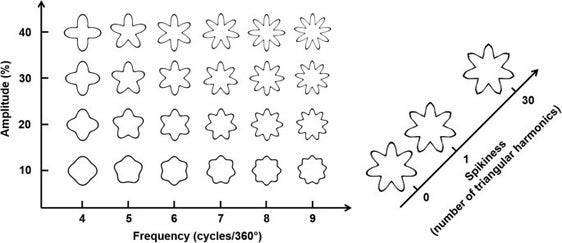Bouba and Kiki Effect
Have you ever wondered why certain shapes seem to be associated with specific sounds or words? This intriguing phenomenon, known as the Bouba-Kiki effect, delves into the fascinating world of cross-modal perception, where our senses intermingle to influence our perception of the world around us. In this casual long essay, we'll embark on a journey into the psychology of the Bouba-Kiki effect, exploring how sound affects the way we see and interpret shapes.
The Bouba-Kiki effect, first introduced by German-American psychologist Wolfgang Köhler in 1929, is a vivid illustration of how sound can significantly shape our perception of shapes. In Köhler's experiment, participants were presented with two abstract shapes: one jagged and spiky, and the other smooth and rounded. Simultaneously, they were given two nonsense words, "Bouba" and "Kiki," and asked to match each shape with one of the words. Astonishingly, an overwhelming majority of participants consistently associated the rounded shape with "Bouba" and the spiky shape with "Kiki."
Sound, Symbolism, and Synesthesia
Sound symbolism is the idea that there is a natural connection between the sound of a word and its meaning. This connection is not arbitrary but is rooted in the way our vocal apparatus produces sounds and how our brain processes these sounds. For instance, words with sharp, high-pitched consonants like "K," "T," or "P" are often associated with sharp or pointy objects, while words with softer, rounder sounds like "B," "M," or "L" tend to evoke images of smoother, rounder shapes. The Bouba-Kiki effect can be seen as an extension of this principle.
Synesthesia is a rare neurological condition in which stimulation of one sensory or cognitive pathway leads to involuntary experiences in another. In the context of the Bouba-Kiki effect, it's as if our brain temporarily creates a synesthetic experience, blending auditory and visual sensations. When we hear the sharp, crisp sounds of "Kiki," our brain conjures images of jagged, angular shapes, whereas the soft, melodious sounds of "Bouba" evoke visions of smoother, rounder forms.
Neurological Mechanisms Behind the Bouba-Kiki Effect
The Bouba-Kiki effect's neurological underpinnings provide deeper insights into how sound and shape perception interact. Recent neuroimaging studies have shed light on the brain regions responsible for this intriguing phenomenon. One such study, conducted by V. S. Ramachandran and Edward Hubbard, found that the angular shapes of "Kiki" activated areas of the brain associated with visual processing, specifically the left fusiform gyrus, while the rounded shapes of "Bouba" engaged the right fusiform gyrus.
This effect isn't limited to one language or culture. Studies have shown that the Bouba-Kiki effect is universal, suggesting that it taps into fundamental aspects of human perception that transcend linguistic and cultural boundaries.
Practical Implications
Understanding the Bouba-Kiki effect can have practical applications in various fields, including design, marketing, and branding. Designers can use this knowledge to create visual identities for products or companies that evoke specific emotional responses. For instance, a company seeking to convey a sense of innovation and sharpness may opt for angular logos and branding, while a company emphasizing comfort and smoothness may opt for rounder, softer design elements.
The Bouba-Kiki effect offers a captivating glimpse into the intricate interplay between our senses and cognition. It demonstrates how sound, something we typically associate with hearing, can influence our perception of shapes and visual elements. Through concepts like sound symbolism and synesthesia, we begin to unravel the complex web of human perception and how it shapes our understanding of the world. The next time you encounter an abstract shape or hear a peculiar-sounding word, consider the Bouba-Kiki effect and marvel at the fascinating ways our senses interact to construct our reality.


Add comment
Comments